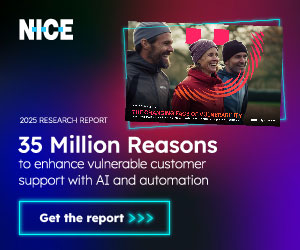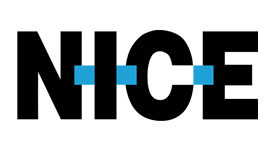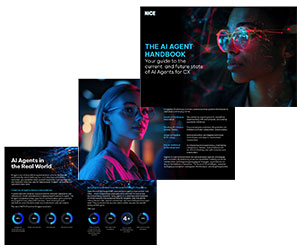Dutch Railways (Nederlandse Spoorwegen) carries passengers point-to-point within The Netherlands as well as to several European nations beyond, and handles 4 million customer contacts annually including 2.5 million voice interactions.
Challenges
Like many organizations, Dutch Railways initially benefited from contact centre technology which linked agent skills to a product.
For example, customers who need assistance with electronic tickets can be routed to agents trained specifically in the sale and service of e-tickets.
Over time, the broadening range of products, services, and communication channels meant that the number of product-oriented skills grew unbounded.
Combined with the fact that most of the railway’s communication channels were handled by different vendors, as were its telephony platform and quality management systems, the contact centre was growing into a state that was difficult to manage efficiently.
What had started as a clean division of two agent pools, divided between BPO service for end consumers and in-house care for business customers, had come to operate like six fenced-off teams. Complicating matters even further for customers, several key service tasks were only available on a single channel.
The growth in product-linked agent skills as well as the disparate handling of each contact channel made operations needlessly complicated.
Under the old structure, it was difficult to see even how the situation could be improved, or how to efficiently turn skills that could only be handled over a single channel over to a larger group of agents.
“Products almost never disappear, so our set of skills would only grow. And nobody really had any control over the situation,” said René Klaassen, Business Consultant for Dutch Railways.
As early as 2018, Dutch Railways recognized both technological and business reasons to modernize its contact centre platforms to address new regulatory requirements, product end-of-life, and other challenges.
When the need became acute in 2022, the organization decided that simply changing technology platforms while preserving current practices would be a mistake.
“We decided that it was time to change the platform and change the business as well,” Klaassen said. “And our primary focus was to become an omnichannel organization, to take full advantage of a new solution.”
Solution
Beginning in early 2023, Dutch Railways selected NICE and BrightContact to implement NICE CXone and NICE IEX Workforce Management solutions.
To pair the modern capabilities with a fresh business approach, the railway reorganized its product-oriented skill focus around customer journeys.
This simplified the structure considerably. Today, agents focus on three distinct core skills: pre-journey, in-journey, and post-journey. “Every product has questions that can be placed in any of those three skills,” Klaassen said.
Dutch Railways transitioned from distinct outsourced and inhouse environments to a single virtual contact centre powered by CXone, eliminating the distinctions between work carried out by employees and contractors.
Instead of several teams with disparate skills and channel focus, NICE’s True to Interval (TTI) technology supports handling blended synchronous and asynchronous volumes and enables the company to utilize activity-based staffing requirements effectively to enable 90% of the railway’s agents to handle interactions across voice and digital channels, including X, Facebook, and WhatsApp.
Agents have input into priority routing for the type of work placed in their queues to help boost employee satisfaction. The IVR has been simplified so that no task is more than two layers deep, and the vast majority of all customer needs can be handled on any Dutch Railways-supported channel.
To best implement the skill overhaul with a focus on journeys and outcomes rather than products, Dutch Railways conducted monthly meetings with agents to review changes and discuss concerns.
A trial program in November 2023 validated processes in a department representing onequarter of the agent pool.
Those agents participated in regular discussion sessions and their feedback was used to further optimize new processes. “Once we focused on customer intentions, we saw how it could simplify the service experience, but we also kept the goals of doing good for our agents and good for Dutch Railways,” Klaassen said.
Results and Achievements
Dutch Railways set conditions for success just as ambitious as its service skills overhaul. The organization wanted to boost both employee and customer experience while also reducing operational costs.
Dutch Railways has reduced the need for call transfers by at least 80%, reducing the overall transfer rate below 1% of all contacts.
First-contact resolution is higher as well, both because of the lower incidence of transfers, consults, or other put-throughs, and because more agents can handle more inquiries on the channel of a customer’s choice. Service levels are also rising, showing the right amount of people are in the right place at the right time.
Occupancy across the six contact centre teams would vary considerably, as some departments would run very near 100% while others sat comparatively idle.
With the new skills modeling and greater ability to serve customers across channels, occupancy is both smoother across groups and more stable over time. “Having more stable occupancy across all groups should be a benefit for employee satisfaction,” Klaassen said.
Occupancy has also climbed from 78% to 85%, agent training time has been reduced from 12 to two days because agents no longer need to learn several systems, and overall operational costs are down 10- 15% on an annualized basis. “That’s a huge result and above everyone’s expectation,” Klaassen said.
Anecdotally, the strong agent acceptance of the new system shows that the new approach is working. The railway was able to handle a high volume of inquiries related to railway strikes in neighboring countries without overburdening agents.
During another recent surge in volume, some agents braced for the worst but acknowledged that call queues were still being efficiently cleared. “One of the agents told me that he could see the system was working as designed,” Klaassen said. “Knowing that the agents could see the benefits now was a truly happy moment for me.”
The Future
Dutch Railways will continue to refine its approach with CXone and NICE Workforce Management as it focuses on journey-based customer care.
Email, which is still handled in a separate CRM system, will be integrated with other channels in CXone, as will some of the 10% of call volume still handled in a productbased rather than journey-based mode.
This blog post has been re-published by kind permission of NICE – View the Original Article
For more information about NICE - visit the NICE Website
Author: NICE
Published On: 2nd Sep 2024
Read more about - Industry News, Case Studies, NICE






 NICE is a leading global enterprise software provider that enables organizations to improve customer experience and business results, ensure compliance and fight financial crime. Their mission is to help customers build and strengthen their reputation by uncovering customer insight, predicting human intent and taking the right action to improve their business.
NICE is a leading global enterprise software provider that enables organizations to improve customer experience and business results, ensure compliance and fight financial crime. Their mission is to help customers build and strengthen their reputation by uncovering customer insight, predicting human intent and taking the right action to improve their business. 































